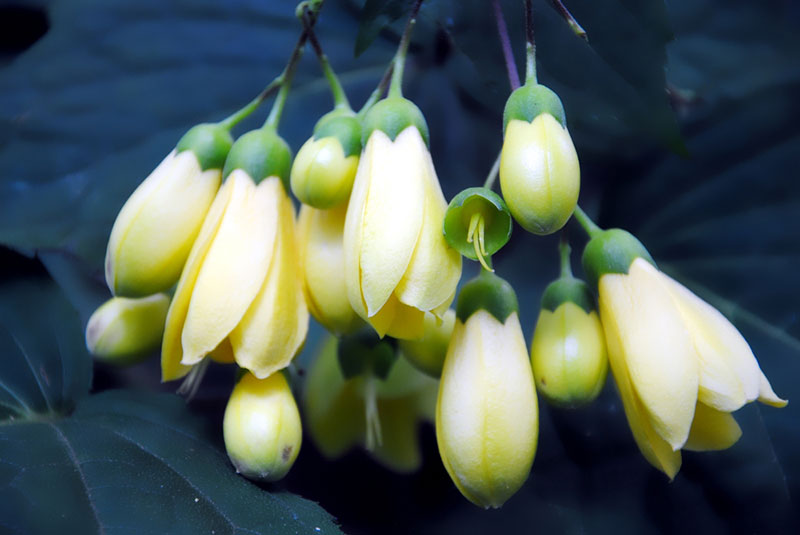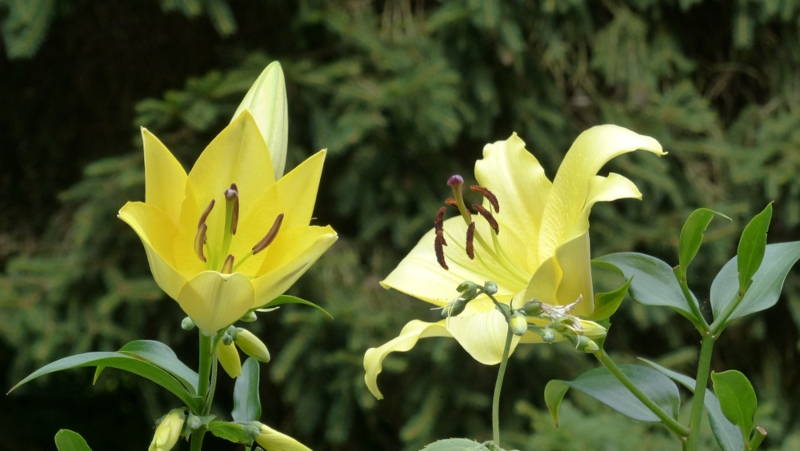
If you are looking for a plant that does well in the shade, then Yellow Wax Bells are ideal for your garden. They are unique looking plants that have maple-shaped leaves and clusters of yellow blooms.
The blooms can be seen during the summertime, and it grows in USDA hardiness zones five to eight. Most Yellow Wax Bells can reach 3 to 4 feet in height, making an excellent ground cover for any garden.
Keep reading this guide for more growing care tips and information about these plants.
Light and Temperature Requirements
Insofar as light, yellow wax bells can manage part to full shade. A good way to grow these is to ensure that they get some sun in the morning and expose them to shade as the day goes on. This will ensure that the plants grow well throughout the season. Full sun can damage the leaves, especially if you live in a part of the country where the heat can be intense.
Yellow wax bells are only somewhat vulnerable to dips in temperature, which can happen during the end of winter or beginning of spring. During dips, the leaves will blacken if exposed to frosty temperatures. This plant can survive in USDA Zones 4 or 5, which means that it can manage lower temperatures between 20 to 30 degrees Fahrenheit. Remember to shelter your wax bells from the wind as too much of a breeze can damage the plant.
Water Requirements
Yellow wax bells need a goodly amount of water, especially if you live in a drier climate. It’s important to keep the soil nice and moist with a lot of minerals. Regularly check the soil to ensure that it has a good amount of moisture. If your wax bells are water-starved, you’ll start to see sulking and damage along the plant’s stem. Ideally, you should water the plant at least once a week.
Soil and Fertilizer Requirements
This variety of waxy plant needs soil that is humus-rich and has a relatively high degree of acid. The soil should also be well-draining for yellow wax bells because sitting in overly-wet soil will cause root rot. You should avoid excessive fertilization with your wax bells because the plant doesn’t need it. To give your plant a bit more nutrients, you can add compost to the soil that you use.

Deadheading and Pruning
When it comes to deadheading yellow wax bells, you won’t need to do much for this plant. These wax bells aren’t very fussy, and blooms should naturally fall off the plant when the blooms are spent for the season. If this does not naturally occur, you can deadhead the blooms yourself to encourage more flowers to bloom. If the plant starts to get out of control during the spring or the summer, you can trim it back and slow its spread before it starts to grow again.
Propagation
Propagation needs to be done to this plant in the spring of the year so that it does not grow to be too large. To properly propagate the plant, all you need to do is dig up the plant and divide it evenly. This will ensure that both plants have new growth and can easily grow to a mature size. When you divide the plant, you do not damage the roots or the new shoots. After four years of growth, this process should be done to make sure that it has grown enough to be divided.
Growing from a Seed
This plant can be grown either indoors or outdoors, so when you are sowing the seeds, you will need to consider the best way to go about it. If the seed is planted outside, then the seed will need to be covered so that it does not get damaged during its growth period.
The germination period can take anywhere from a month to 12 months. Make sure to keep the temperature between 55 degrees Fahrenheit and 65 degrees Fahrenheit for the best results. When you start to see evidence of growth, the plant can be transplanted outdoors in a shaded area. Do not transplant it if there is still frost on the ground at night.
Pests and Problems
When it comes to insect pests, there are not many that will affect this plant and bring damage to the leaves or roots. However, there are some pests that you will want to look for. Slugs, snails, and earwigs can be an inconvenience to this plant, so take steps to protect your garden from these pests.




